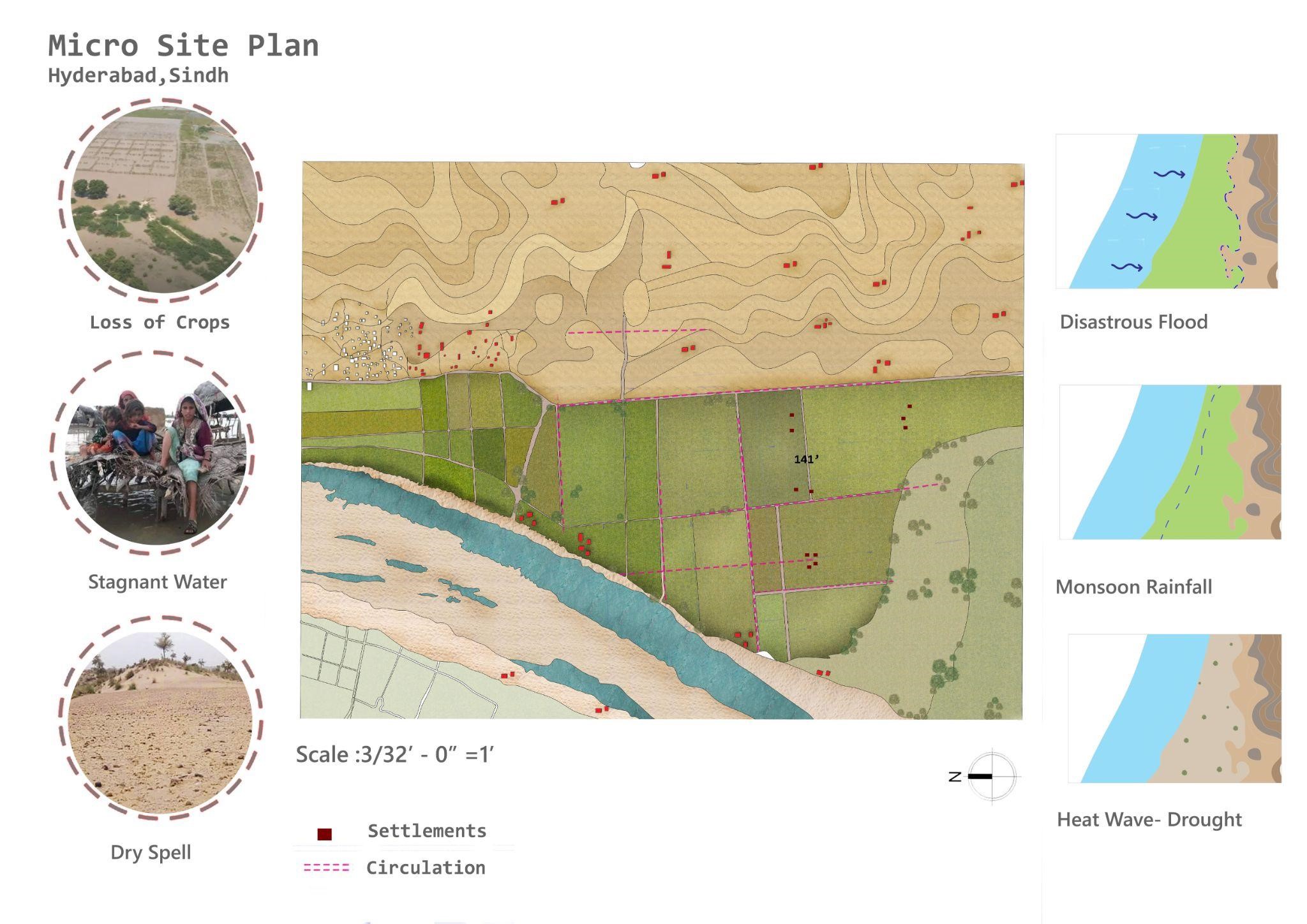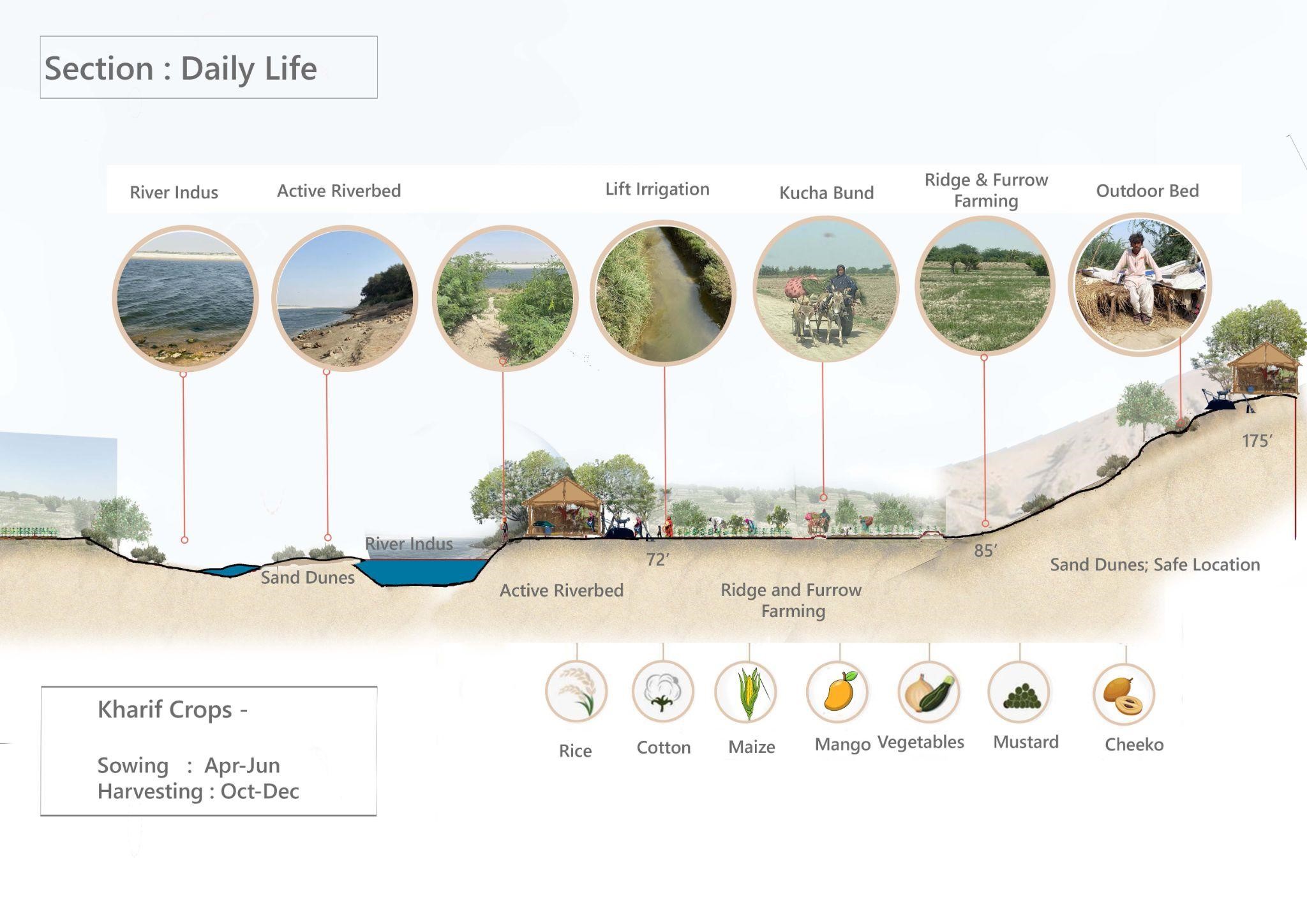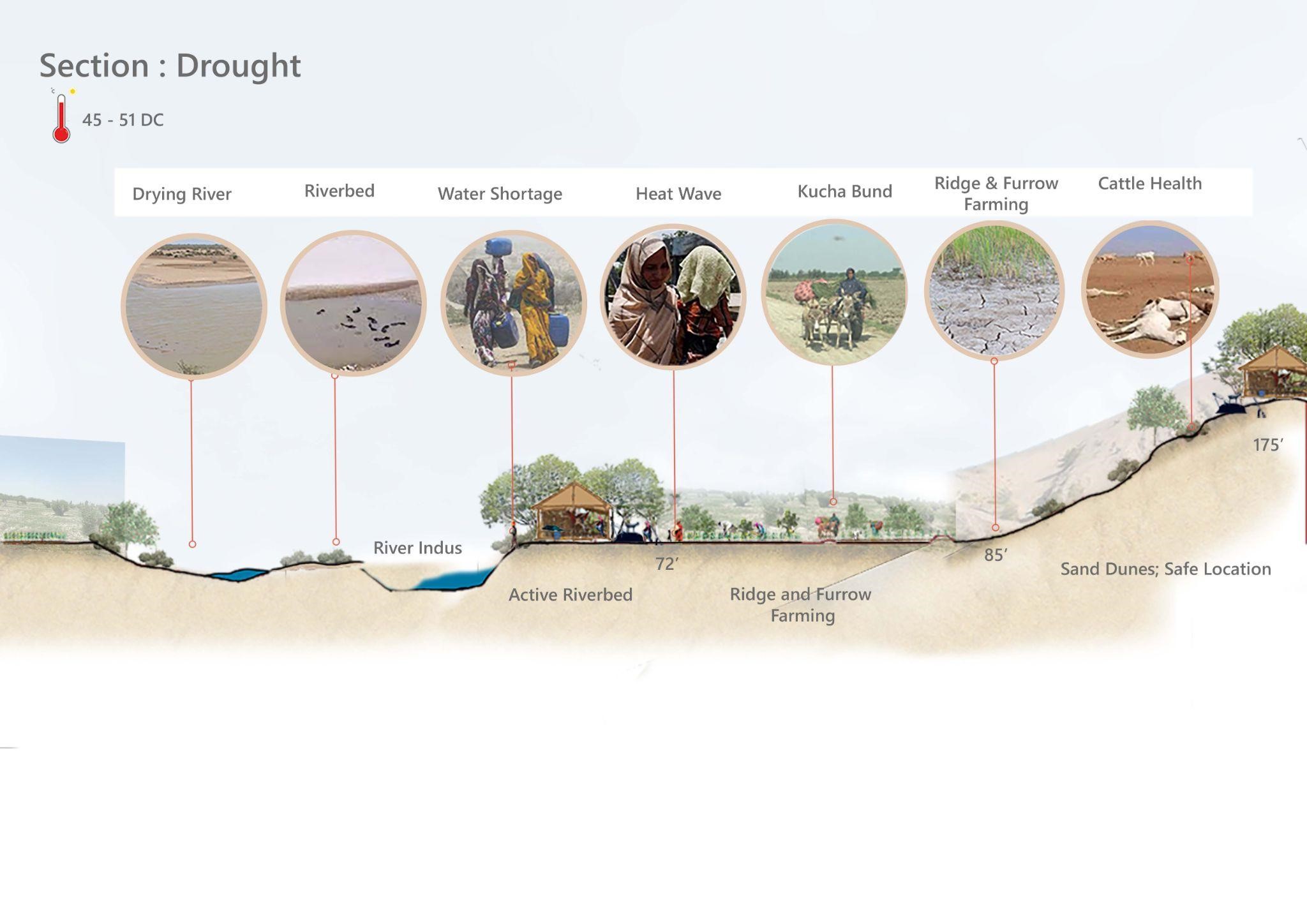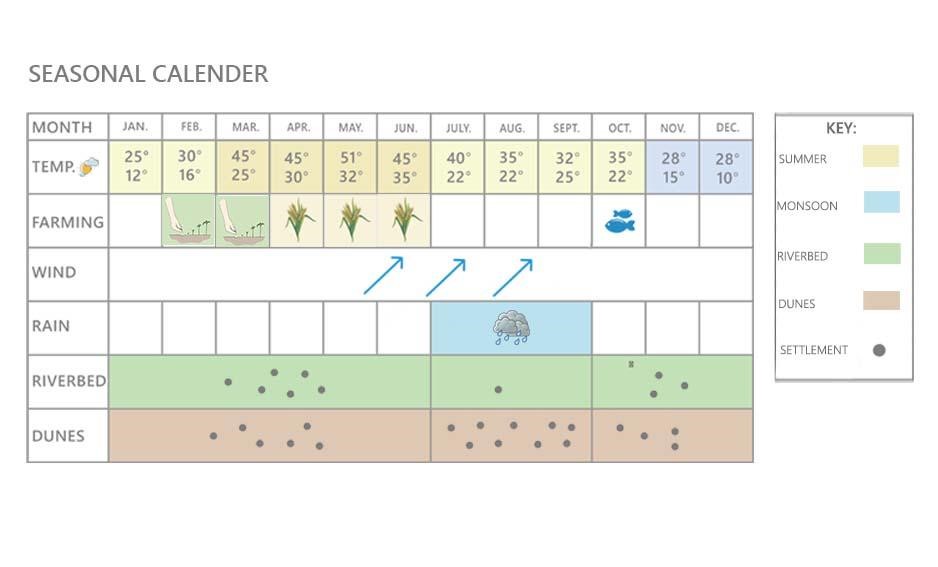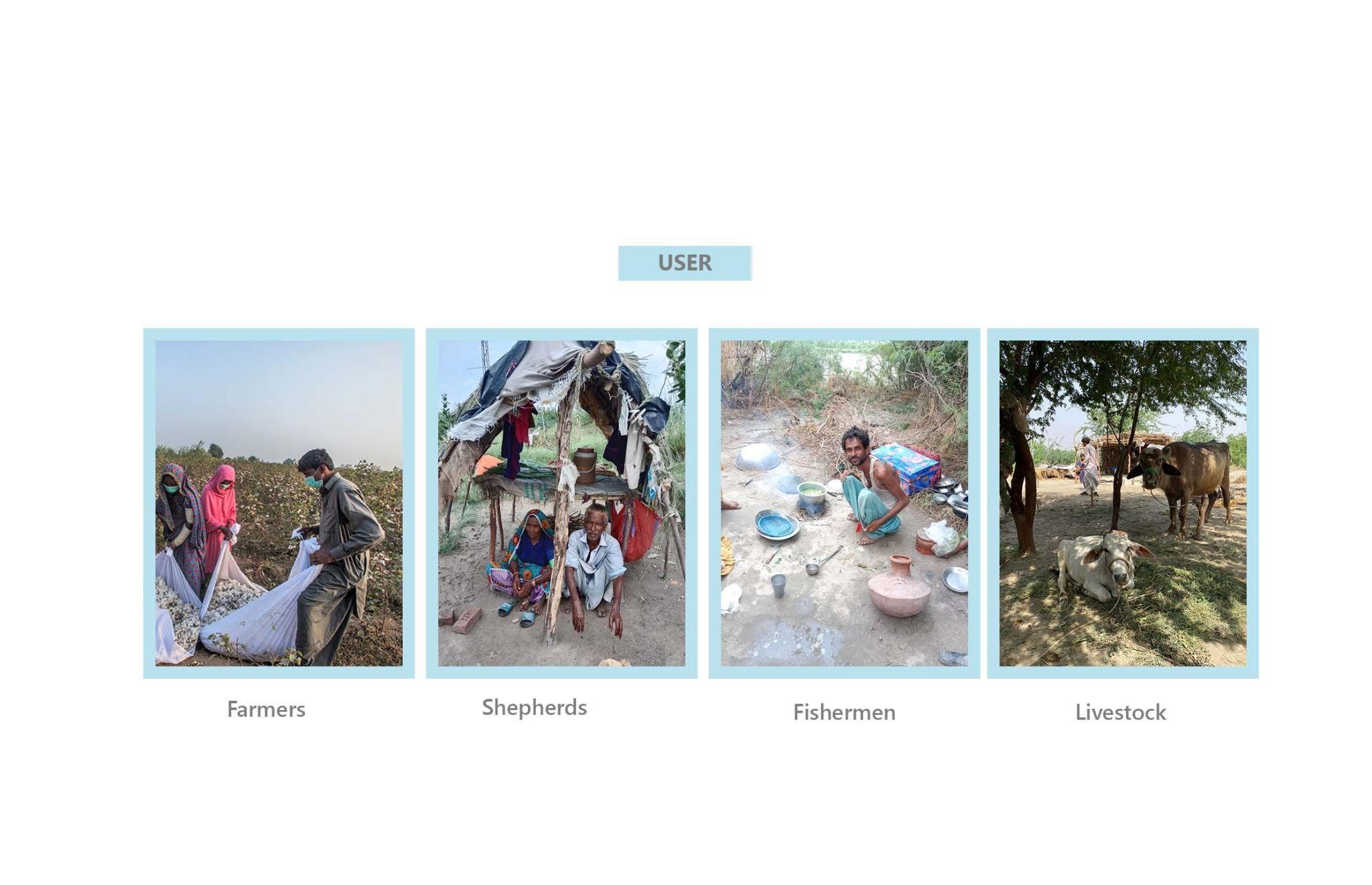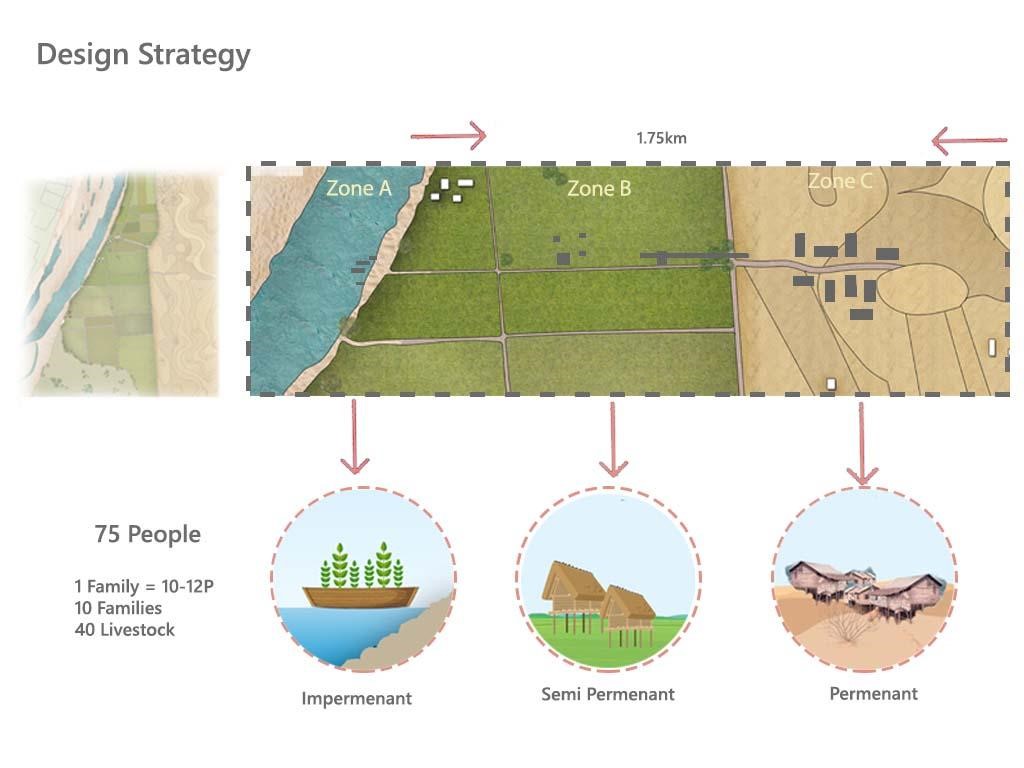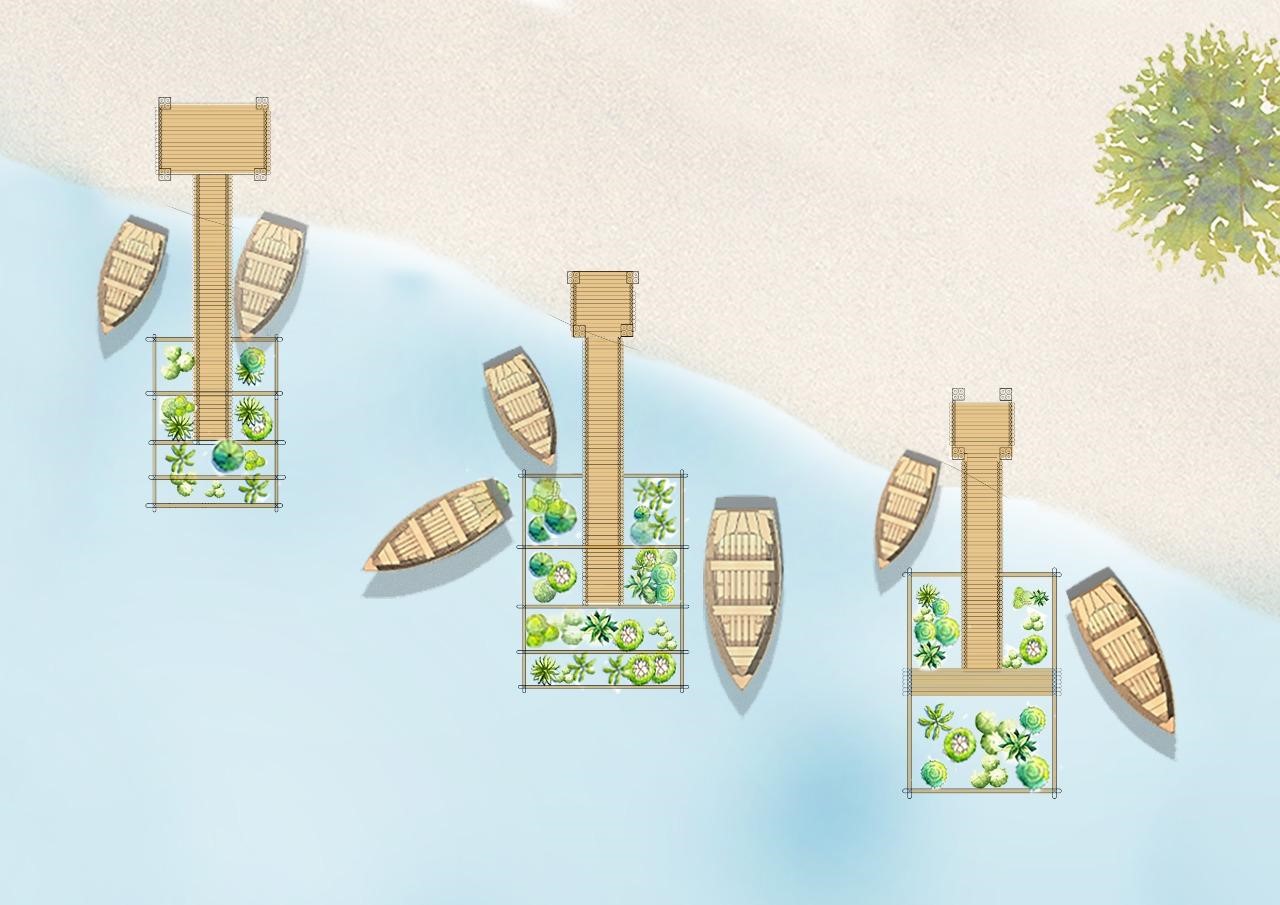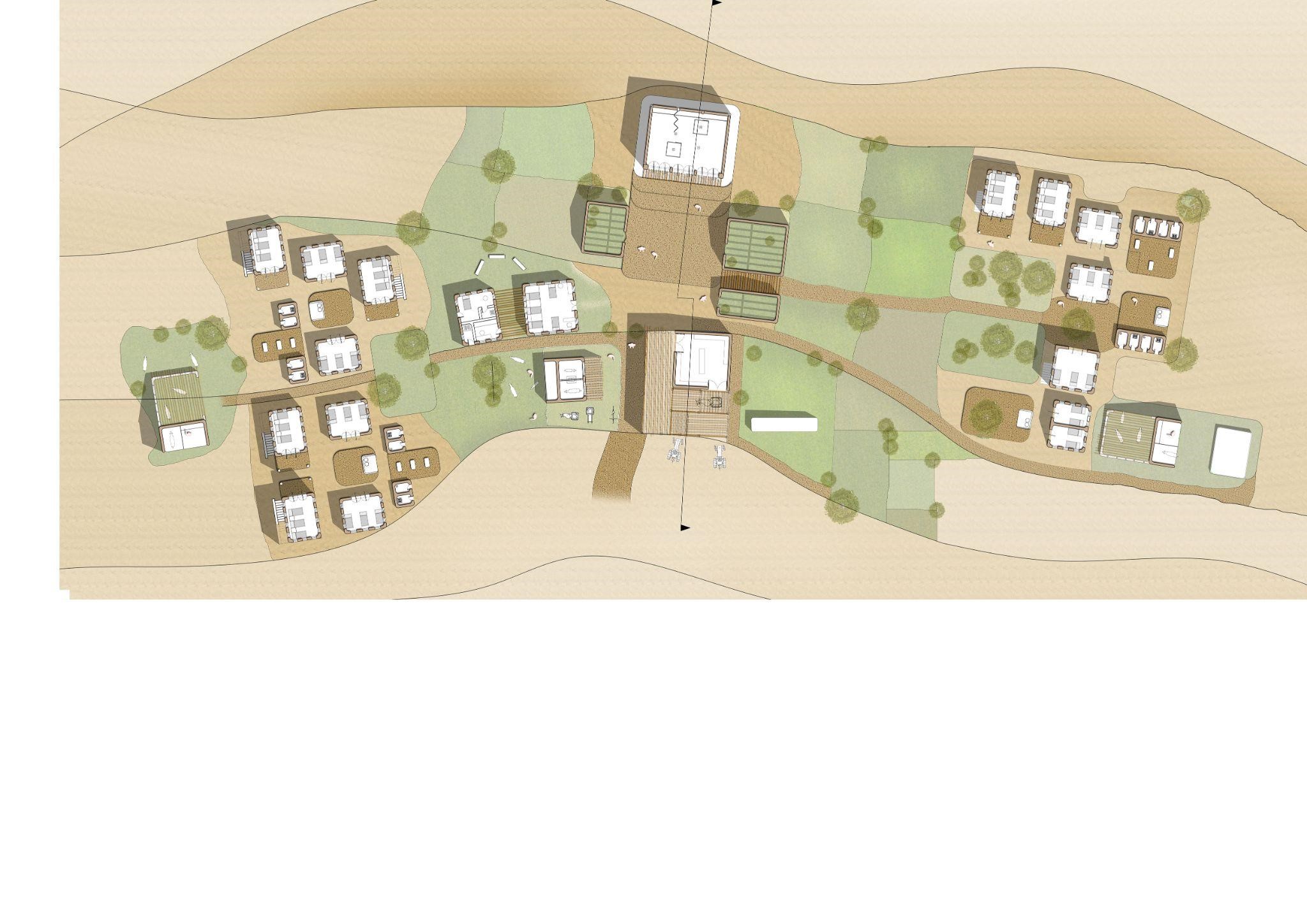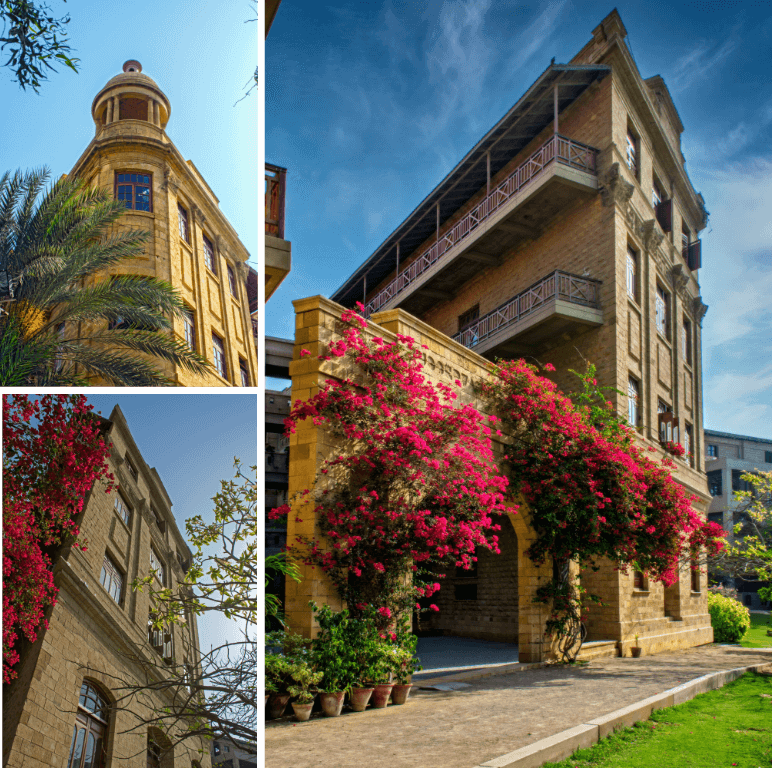Maha Sheikh
Thesis Title:
An abode of safety for the Maalha and Maathi riverbed communities.
Project Title:
A community based approach to a crisis problem.
Location:
Riverine area on the outskirts of Hyderabad, Sindh.
User Group:
Riverbed population of the kucha area of Sindh- Maalha and Maathi Communities.
The ephemeral landscape of the Indus river is defined by the alluvial deposits, the fertile soils, and the meandering paths formed by the flow of water. In this region of Sindh, water is both a blessing and a curse that threatens the fragile and makeshift way of life of the riverbed communities that live by and along it. The Maalha and Maathi communities of downstream river Indus who make up the rural river bed population, have made a makeshift habitat that rely on these forces of nature for sustenance along and around the fertile riverbed. Even though they benefit from farming on the arable lands their livelihoods are extremely vulnerable to and at a greater risk to climate discrepancies like river overflows, extreme temperatures, and unpredictable monsoon rainfalls. This unpredictability, and disparity that is a given once every year, during the monsoon season has affected livestock, agricultural practices and farmer’s livelihoods, displacing and disrupting their ways of life. Depending on the brevity of the climate discrepancy this displacement could last up too many months, until the fields are fit for farming again.
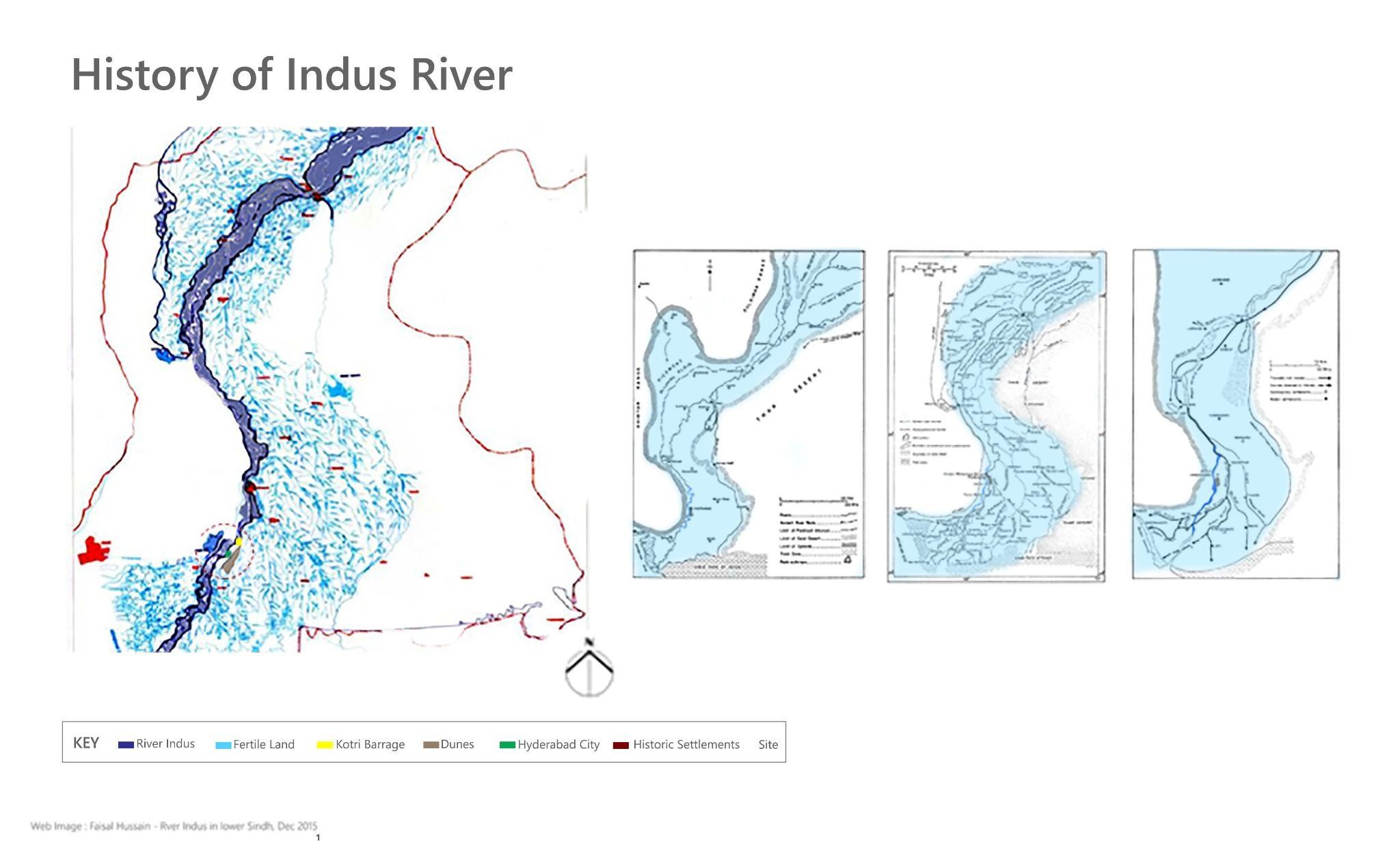

Maha Sheikh
Architecture
Thesis Title:
An abode of safety for the Maalha and Maathi riverbed communities.
Project Title:
A community based approach to a crisis problem.
Location:
Riverine area on the outskirts of Hyderabad, Sindh.
User Group:
Riverbed population of the kucha area of Sindh- Maalha and Maathi Communities.
The ephemeral landscape of the Indus river is defined by the alluvial deposits, the fertile soils, and the meandering paths formed by the flow of water. In this region of Sindh, water is both a blessing and a curse that threatens the fragile and makeshift way of life of the riverbed communities that live by and along it. The Maalha and Maathi communities of downstream river Indus who make up the rural river bed population, have made a makeshift habitat that rely on these forces of nature for sustenance along and around the fertile riverbed. Even though they benefit from farming on the arable lands their livelihoods are extremely vulnerable to and at a greater risk to climate discrepancies like river overflows, extreme temperatures, and unpredictable monsoon rainfalls. This unpredictability, and disparity that is a given once every year, during the monsoon season has affected livestock, agricultural practices and farmer’s livelihoods, displacing and disrupting their ways of life. Depending on the brevity of the climate discrepancy this displacement could last up too many months, until the fields are fit for farming again.
In its history, the people of rural Sindh have been climate refugees; a victim to the climatic discrepancies to which they lose their livelihood, livestock, agriculture and habitat once in two years.
Life and Activities on Site
The Macro site shows that my site is divided into three topographical zones; the wetland, the arable land and the semi-arid desert, each of which has its own designated way of giving sustenance to the riverbed communities.
The micro site plan shows that settlement clusters are scattered along all three zones, and circulation happens on the kucha bunds that connect the three locations. The site is ephemeral, and has seasonal changes that alter its topography , at least once a year during the monsoon season. Droughts and river-overflows are one off event based disasters that cause major havoc and displacement.
This section depicts the site on a daily basis. Ridge and Furrow farming is the most common way of farming, and during most of the summer months, kharif crops are grown.
This section depicts my site during extreme temperatures or a drought. The riverbed starts drying up, the land is unfit for agriculture, as a result of which crops cannot be grown and cattle health and life is at risk.
This section shows my site, during monsoon rainfall or a disaster where the highest recorded water level is marked. Uptill the annual summer monsoon season, the amount of water received is beneficial to recharge and rejuvenate groundwater and soils. Hence, during this time, the micro climate gets better and cooler, and rabi crops are grown mostly. During a disaster when the river overflows, the communities temporarily move to the sand dunes, until the water recedes and it's safe to live there again.
The seasonal calendar concludes my findings from the site plan and sections, showing that the settlements living here are nomadic in nature, and keep moving to find the best environment for their crops and livestock, to resettle again.
The Maalha and Maathi riverbed communities consist of farmers, shepherds and small scale fishermen along with their cattle herds.
Based on the seasonal calendar, my design strategy is to scatter my program on all three zones. Taking cues from the landscape itself, the architecture has a gradient that moves from impermanent to semi permanent to permanent.
Zone A or the River : This consists of a nature based solution inspired by the floating gardens of Bangladesh. These are rafts that are made from compost and plant based material that grow in shallow water. The rafts could also become platforms for traditional fishing, and boats can be parked to it, during the monsoon season.
Zone A or the River : This consists of a nature based solution inspired by the floating gardens of Bangladesh. These are rafts that are made from compost and plant based material that grow in shallow water. The rafts could also become platforms for traditional fishing, and boats can be parked to it, during the monsoon season.
Zone C or Dunes: This is the abode for safety that attempts to provide play, eat, health and all other basic needs in a masterplan. Public functions like tunnel farms, seed bank, community center, health clinic are provided in the central space and the right and left wings contain dwelling clusters of different sizes. Through techniques like desert farming, tunnel farming, essential crops can be grown to compensate if the fields are inaccessible due to the harvest season or any climatic discrepancy.



